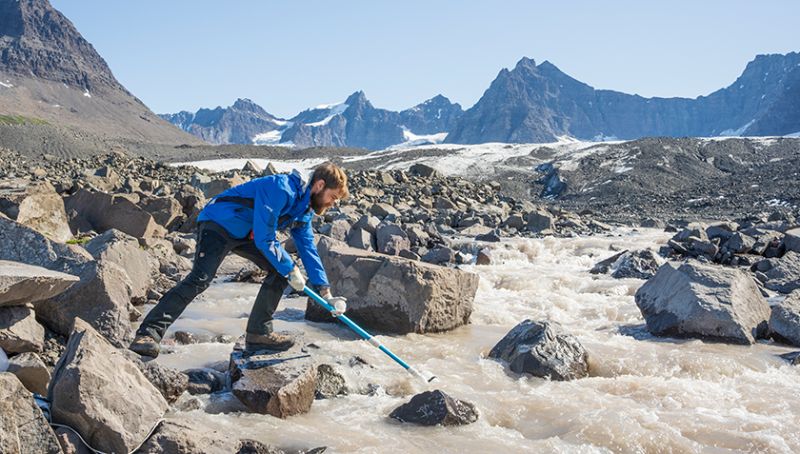Heavy metals in the rivers of Greenland
The rivers in Greenland can transport unusually high concentrations of heavy metals, including copper, zinc, gold, silver, platinum, lead and mercury. Many of these heavy metals are toxic. However, in low concentrations, some of them are important and necessary nutrients for microorganisms, just as they are for humans. For these metals, only excessive concentrations are harmful, endangering life in the Arctic environment and the entire food web, from plankton to fish and humans.
A large proportion of the heavy metals come from natural sources, as Greenland is naturally rich in metals. However, mining activities have also contributed to high local concentrations in the past, as previous studies have shown. Recently, interest in industrial mining has increased as global warming is melting the glaciers and exposing more and more ground. This makes extraction easier logistically and economically. As a result, more and more licences are being issued for the surveying and mining of metals.
Where do the heavy metals found in Greenland’s rivers come from?
David Janssen, head of the Aquatic Geochemistry research group at the aquatic research institute Eawag, is now investigating how local human activity such as mining and agriculture as well as global anthropogenic environmental changes such as climate change affect the concentrations of heavy metals. "We want to understand where high concentrations occur in Greenland and whether they are of natural origin or due to human intervention," explains David Janssen. "We are also interested in how these metals may impact coastal waters, either by being deposited directly at the estuary or being carried out to sea."
In the past summers of 2022 and 2023, with support from the Swiss Polar Institute and the Leister Foundation, the chemist and a field team therefore investigated numerous rivers in southern and eastern Greenland. "We loaded our minimal field equipment into small boats or helicopters every day and set off for the fjords on the southern and eastern coasts of Greenland," says David Janssen. The field team collected water samples there using a telescopic pole and carried out measurements of water conductivity and temperature. The researchers filtered the water samples on site and prepared them for various analyses back at Eawag.
Heavy metals mostly of natural origin
The rivers surveyed cover a broad spectrum of land uses. They originate in the tundra, glaciated landscapes, agricultural areas and regions with known metal deposits. This allows the researchers to draw conclusions about the sources of the observed heavy metals and assess whether changes in the environment, such as global warming and changes in land use, are contributing to the increase in heavy metal concentrations.Rivers in the study area in South and East Greenland
Initial results show that human influences such as mining and sheep farming, which is widespread in southern Greenland, are negligible. The heavy metals found largely originate from natural sources, i.e. the rock in the respective catchment areas, and are at low concentrations relative to global averages. “Our positive result and similar findings from other research groups in Greenland can help stakeholders and local people make more informed decisions about where, whether and how to continue environmentally responsible resource development”, concludes David Janssen.
He and his team are now analysing the data in more detail to determine the specific natural factors controlling heavy metal concentrations, as well as the fluxes of nutrients in the rivers and their importance for the coastal ocean. In addition, the researchers have expanded the study region by conducting sampling in eastern Greenland in summer 2023.
